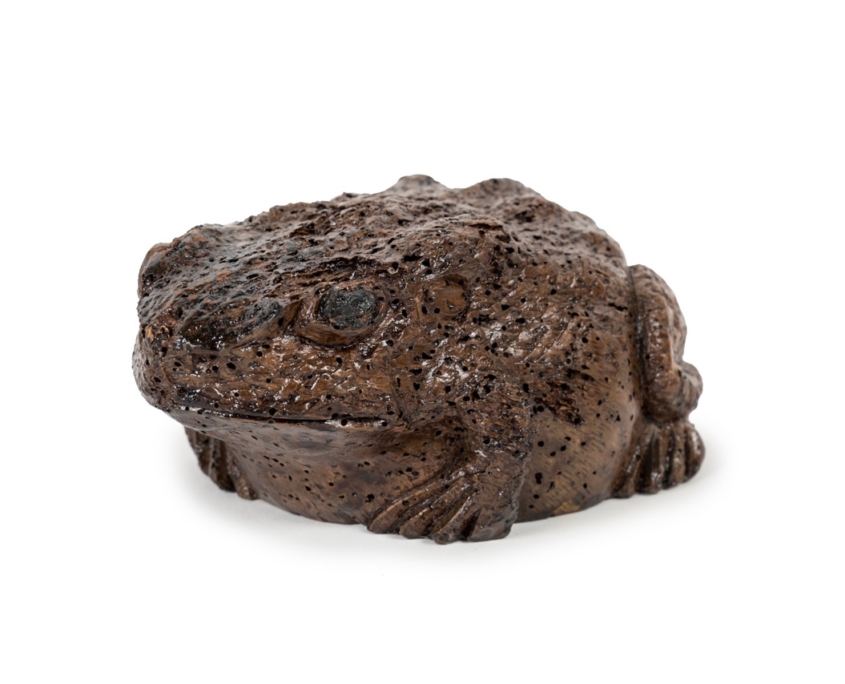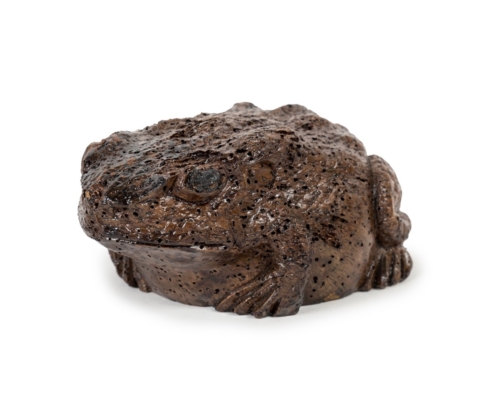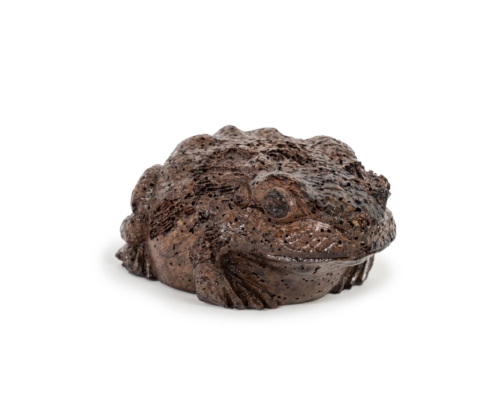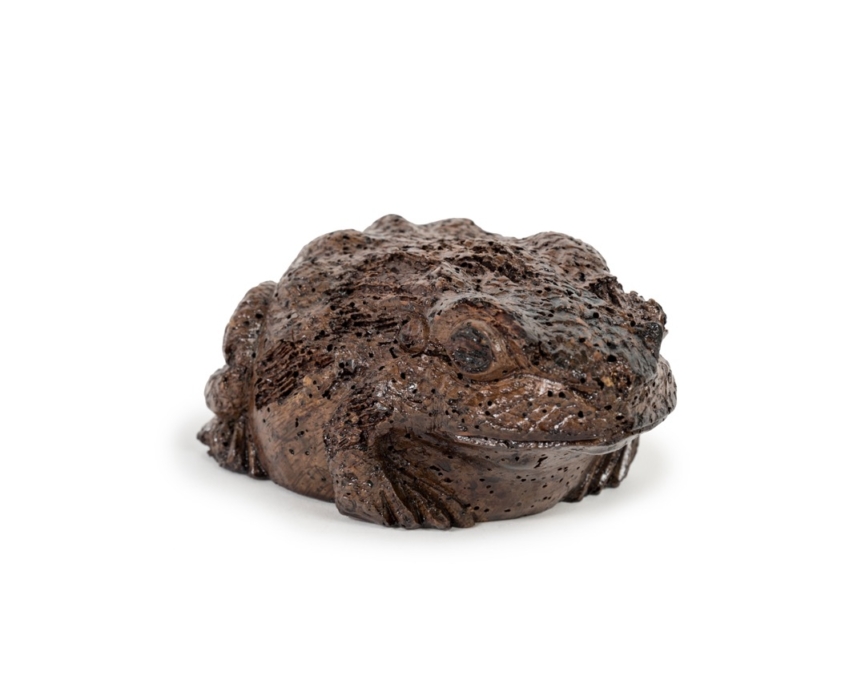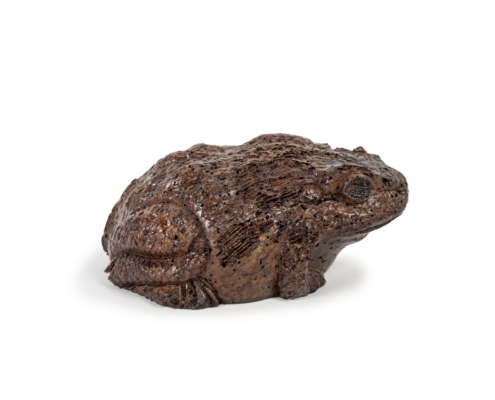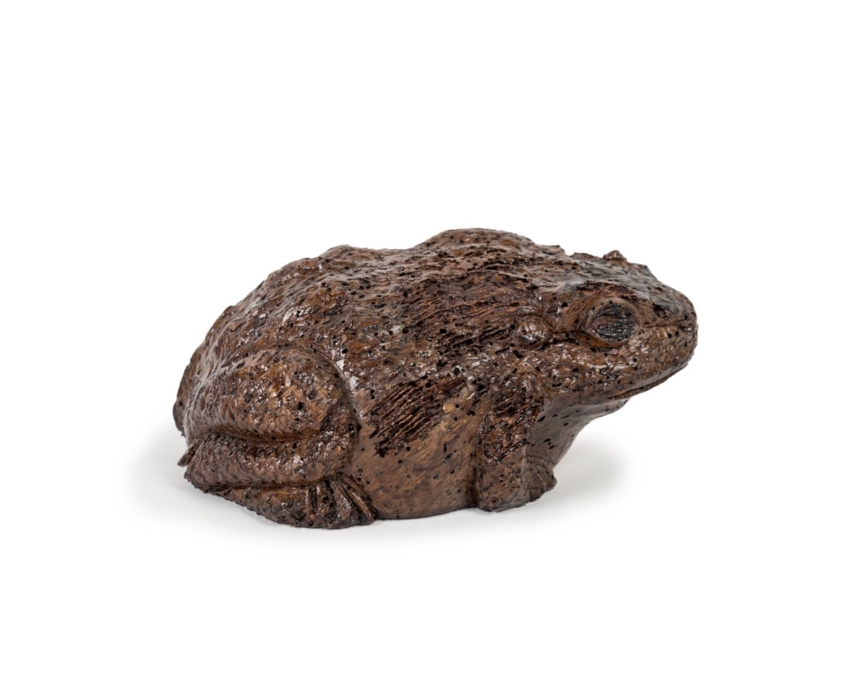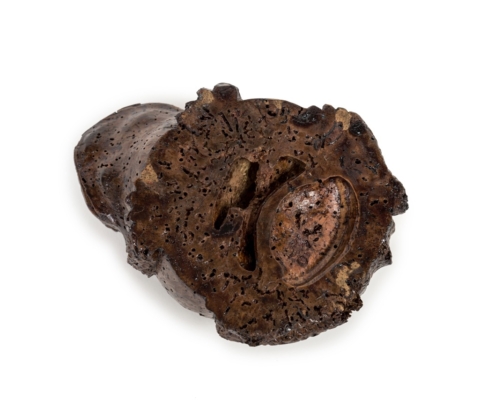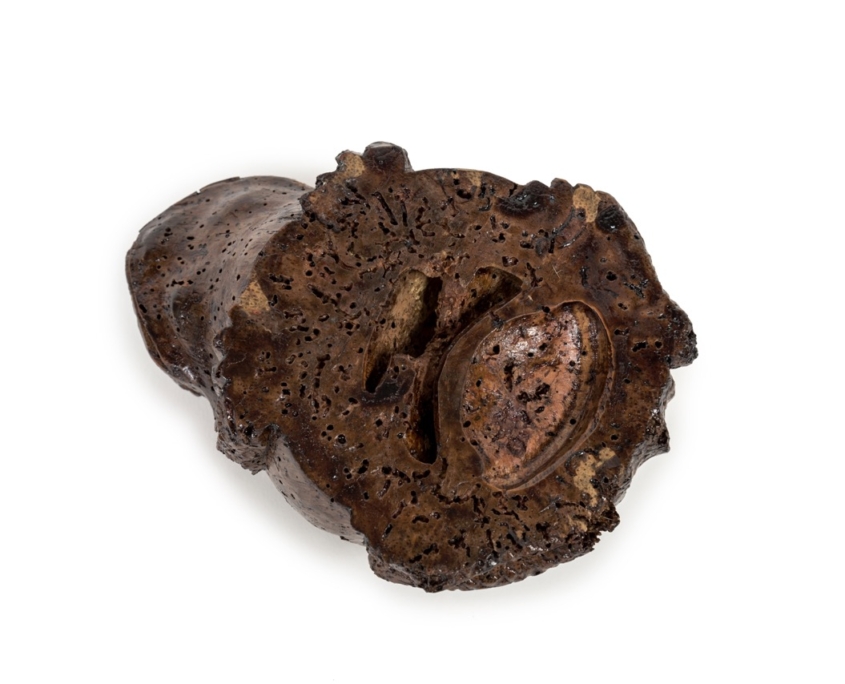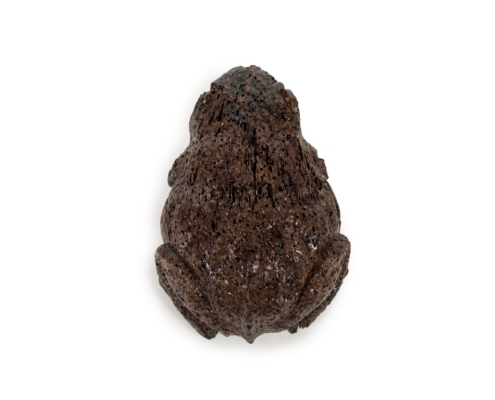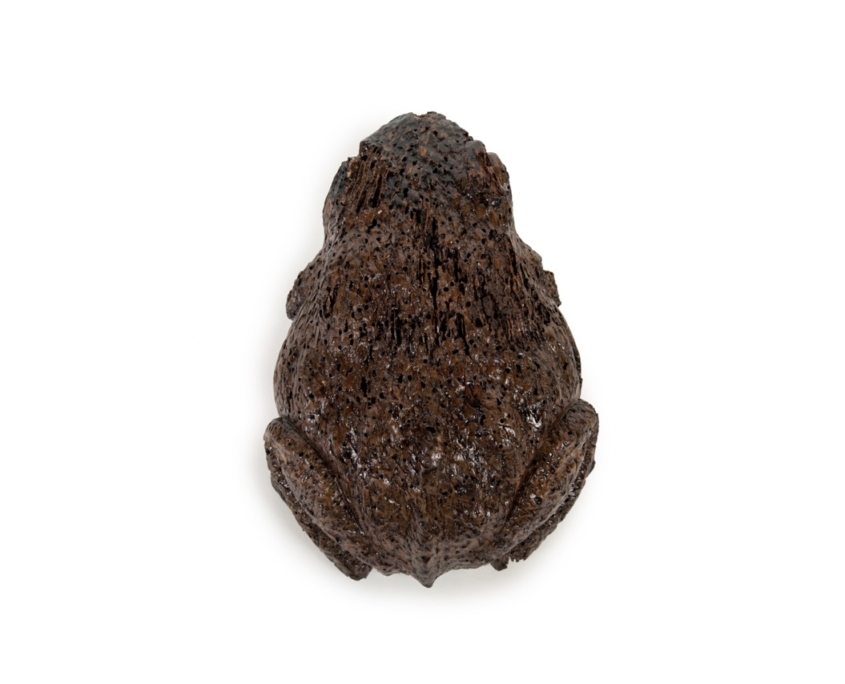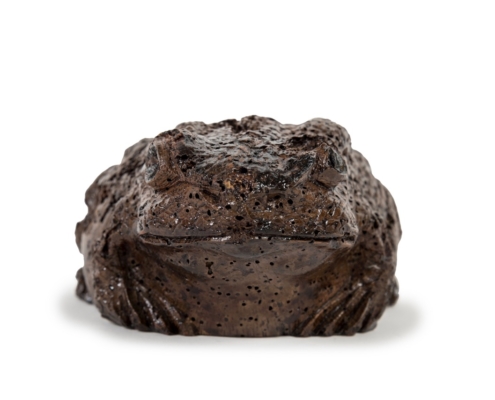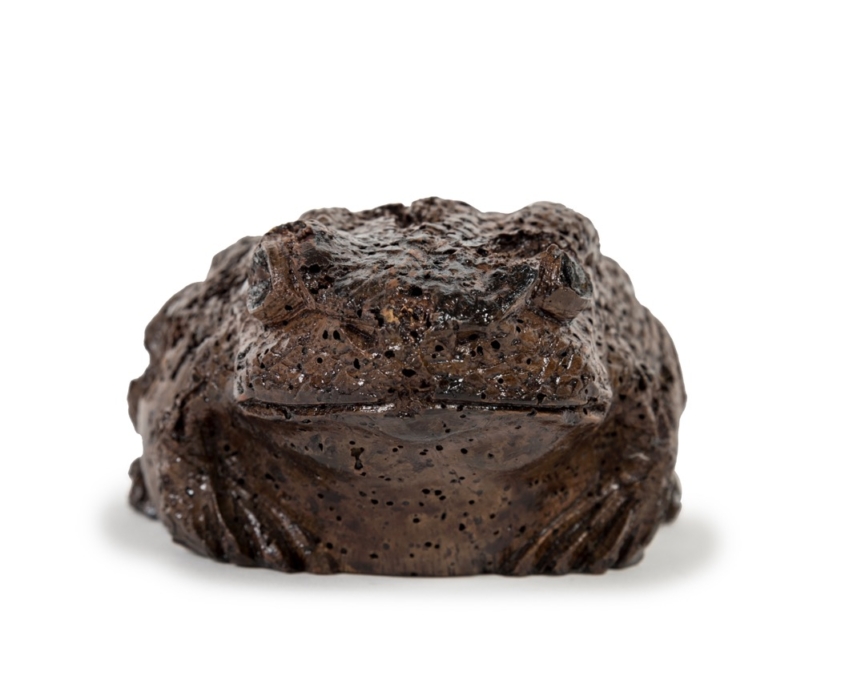BAMBOO TOAD – MEIJI
Reference: 2022-1017
Sculpture in varnished bamboo representing a toad.
The wood, before being carved, was attacked by xylophagous insects, which hollowed it out by forming cavities. After treating and stabilizing the wood, the sculptor was able to use this appearance to depict the toad’s grainy skin: its skin is pustular.
In the Japanese bestiary, the toad occupies a special place, carrying positive values. Both the toad and the frog, called kaeru (蛙) return every year and no matter how far away from the pond they were born. The word kaeru is a synonym for “coming home”. It is the protective animal for travelers and the symbol of hospitality. Its effigy is present on door hammers or gongs placed at the entrance of some houses and hotels. The toad also has the power to attract wealth. This fact dates back to the time of feudal Japan, when tax collectors were recognizable by the netsuke in the shape of a toad or frog that they wore on their belt.
Japan – Meiji era (1868-1912)
Height: 2.6 in (6.5 cm) – width: 4.3 in (11 cm) – depth: 5.8 in (14.7 cm)




